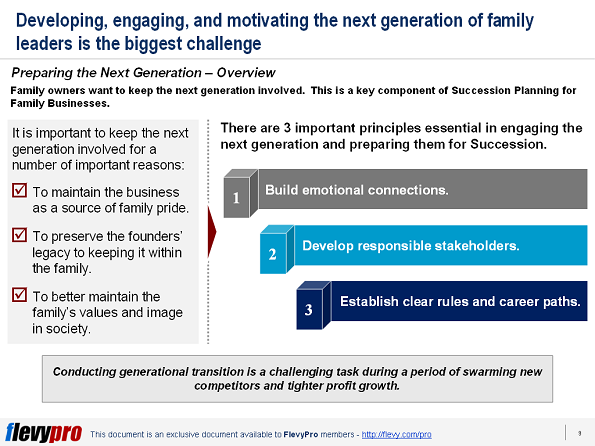 Transforming a product-driven firm to a customer-driven enterprise is inevitable in order to stay ahead in today’s extremely competitive markets. The days of mass marketing, mass media communications, and little-to-none direct interface with customers are long gone. The emphasis, now, should be on maximizing customer relationships and becoming customer-driven organizations rather than merely selling products. The technological advancements of this age offer potent tools for organizations to utilize in order to engage with the customers directly; gather and mine information; and tailor their products and services appropriately.
Transforming a product-driven firm to a customer-driven enterprise is inevitable in order to stay ahead in today’s extremely competitive markets. The days of mass marketing, mass media communications, and little-to-none direct interface with customers are long gone. The emphasis, now, should be on maximizing customer relationships and becoming customer-driven organizations rather than merely selling products. The technological advancements of this age offer potent tools for organizations to utilize in order to engage with the customers directly; gather and mine information; and tailor their products and services appropriately.
Leading organizations are making huge investments in data analytics and transforming their strategies to focus on the customers’ evolving needs. They are striving hard to improve their customer retention and deepen their relationships utilizing rich customer insights, tailoring products according to the personalized needs of the customers, and presenting the offerings in a variety of store formats.
The Customer Department
To become customer-centric organizations, companies need to transform their traditional marketing function into a new unit called the “Customer Department.” The Customer Department should be created to deliver maximum profits to the customers and nurturing customer relationships instead of pushing products.
This necessitates transforming the organizational structure, culture, strategy, and reward programs in line with the shift in focus from managing transactions to cultivating customer relationships. Specifically, there is a need to add the position of Chief Customer Officer (CCO)—under the CEO—and various Customer Managers underneath the CCO. The roles and responsibilities of these positions should be:
Chief Customer Officer (CCO)
The most prominent shift in a customer-centric organization is replacing the traditional Chief Marketing Officer (CMO) role with the Chief Customer Officer (CCO) role. Reporting to the CEO, the CCO is primarily responsible for devising and executing the customer relationship strategy, directing all the client-facing roles, and fostering a customer-driven culture in the organization. The main tasks of the CCO position include ensuring smooth flow of customer information, increasing productivity utilizing various metrics, and regularly interacting with the customers to understand their concerns.
Customer Managers
In a customer-centric organization, the Customer Managers (CMs) are in charge of various customer segments. They are accountable for enhancing the value of a customer relationship by ascertaining customers’ product needs. To make this role effective, there is a need to realign resources—people, budgets, authority—from product managers to the CMs.
The main tasks of the CM position include defining customer needs, extracting and interpreting customer insights utilizing various sources—e.g., mining customer forums, blogs, and online purchasing data—, and striving to improve the lives of the customers.
Additional Responsibilities of the Customer Department
Customer-centric organizations make the Customer Department accountable for some of the critical customer-facing functions which were once considered an integral part of the Marketing Department. These functions include:
- Customer Relationship Management (CRM)
- Market Research
- Research & Development (R&D)
- Customer Service
Customer Relationship Management (CRM)
Traditionally, the CRM function belongs to the Information Technology Department owing to the technicalities involved in managing the CRM systems. The function demands evaluating the customer requirements and behaviors—which is a core function of the Customer Department alongside gathering and analyzing data necessary to execute a customer-development strategy.
Market Research
In customer-centric organizations, the Market Research function goes all the way from the marketing unit to other units that deal with customers—e.g., Finance for payments, Distribution for delivery. These organizations take a more granular view of customers’ behaviors, and gather and incorporate clients’ feedback to further improve customer lifetime value and equity.
Research & Development (R&D)
The R&D function should also report to the Customer Department, as, nowadays, the traditional R&D-driven new product development models are conceding to creative collaboration between the client (users) and producers. It’s not a good idea anymore to pack tons of features into a product and cause feature fatigue to customers. What’s more appropriate is to seek and incorporate customers’ input into product features by involving them into the product design process.
Customer Service (CS)
CS is another function that should be handled by the Customer Department to guarantee quality of service and to nurture long-term relationships. This important function isn’t worth outsourcing overseas as this often causes negative impact to the clients and organizations alike, due to poor customer service.
Interested in learning more about Customer Metrics, Customer Department, and Customer-centric Organizations? You can download an editable PowerPoint on Customer-centric Organizations: The Customer Department here on the Flevy documents marketplace.
Are you a Management Consultant?
You can download this and hundreds of other consulting frameworks and consulting training guides from the FlevyPro library.

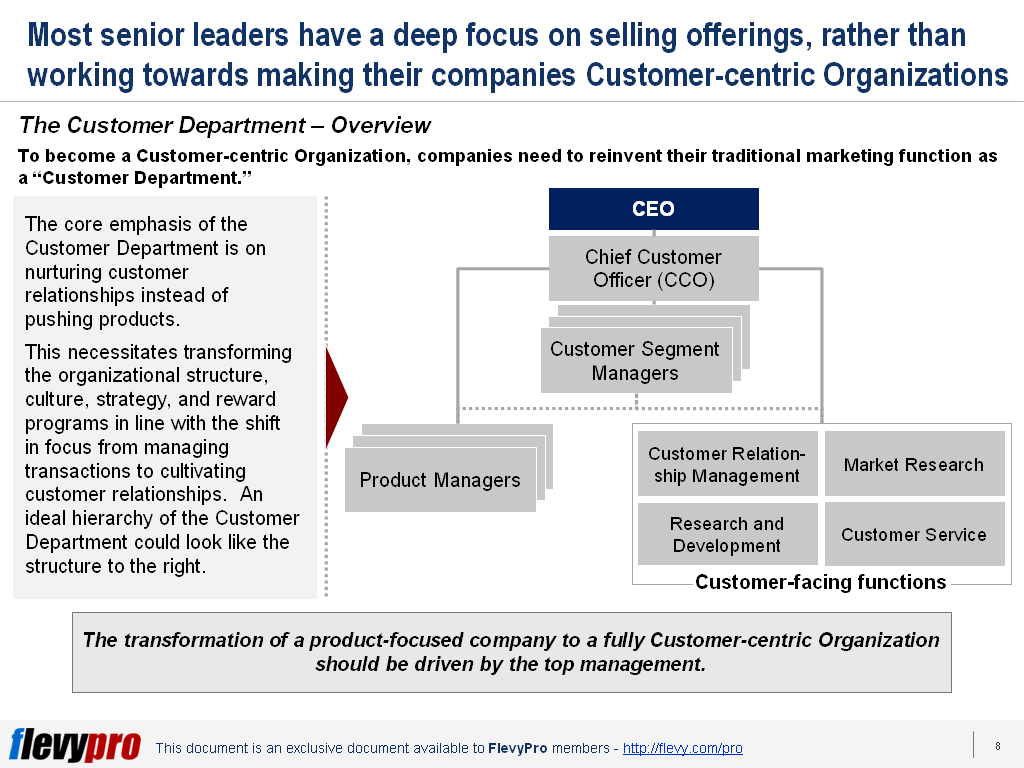

 Changing the behaviors of people is the foremost issue with every transformation initiative.
Changing the behaviors of people is the foremost issue with every transformation initiative.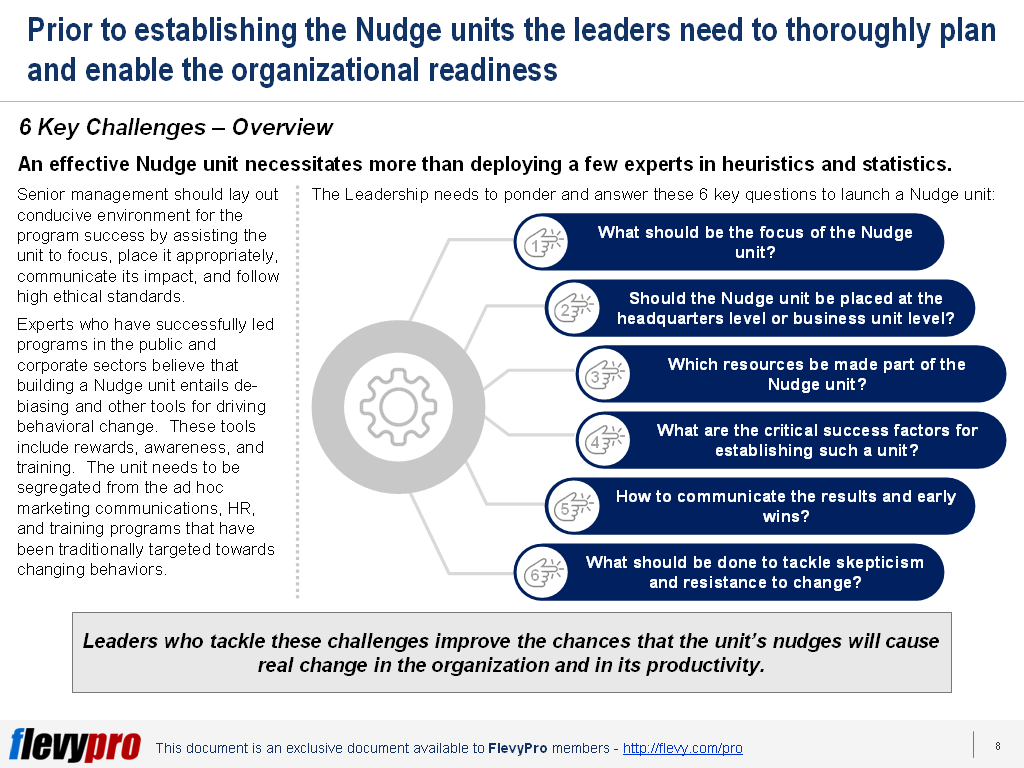


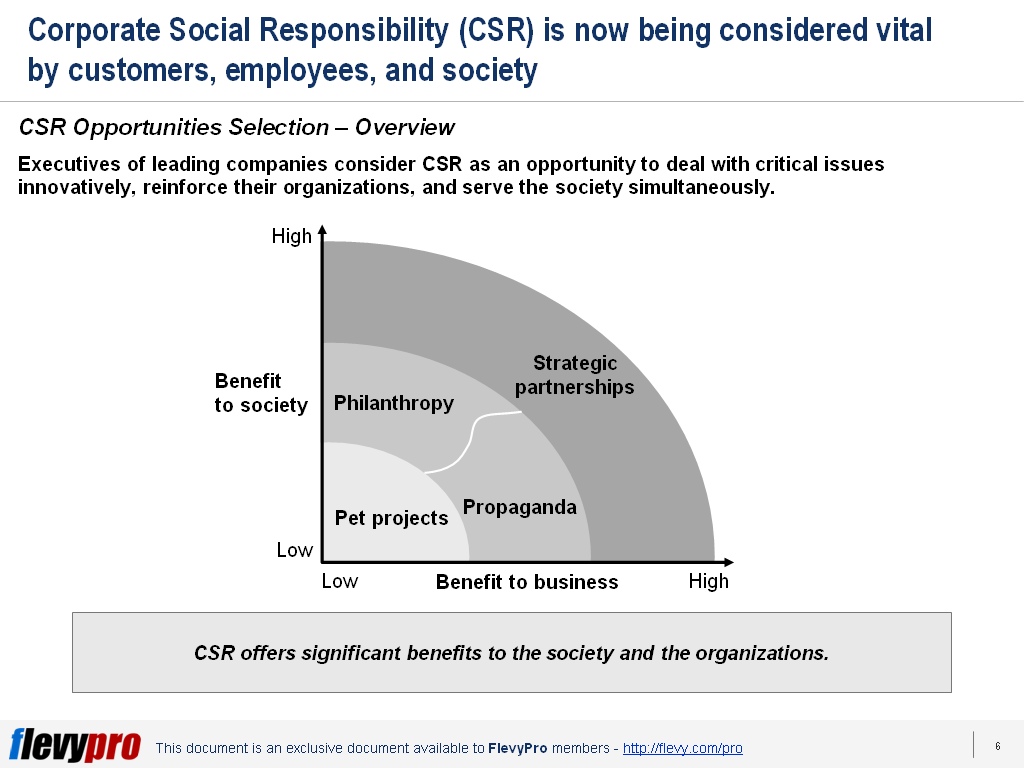

 Takeovers can turnaround companies in a short period of time, but there is a significant degree of risk to be anticipated and mitigated prior to undertaking such transactions. Lack of careful deliberation of the potential risks, insufficient planning, weak execution, and lack of focus on Post-merger Integration are the major reasons why many Merger & Acquisition deals fail to achieve their desired goals.
Takeovers can turnaround companies in a short period of time, but there is a significant degree of risk to be anticipated and mitigated prior to undertaking such transactions. Lack of careful deliberation of the potential risks, insufficient planning, weak execution, and lack of focus on Post-merger Integration are the major reasons why many Merger & Acquisition deals fail to achieve their desired goals.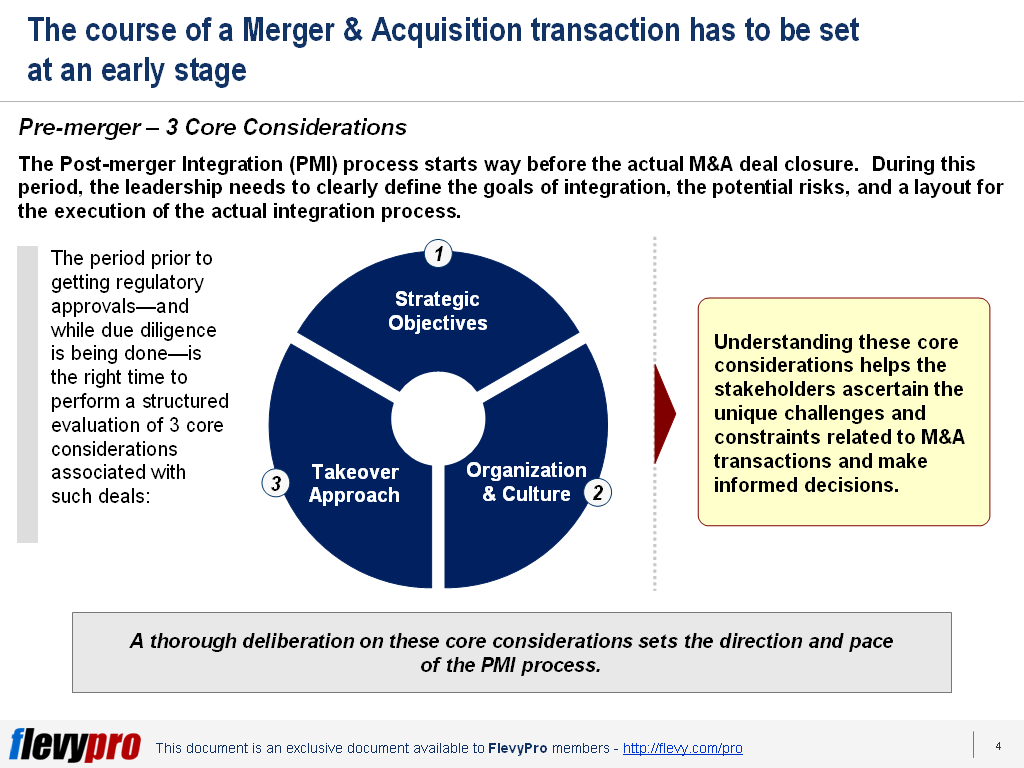


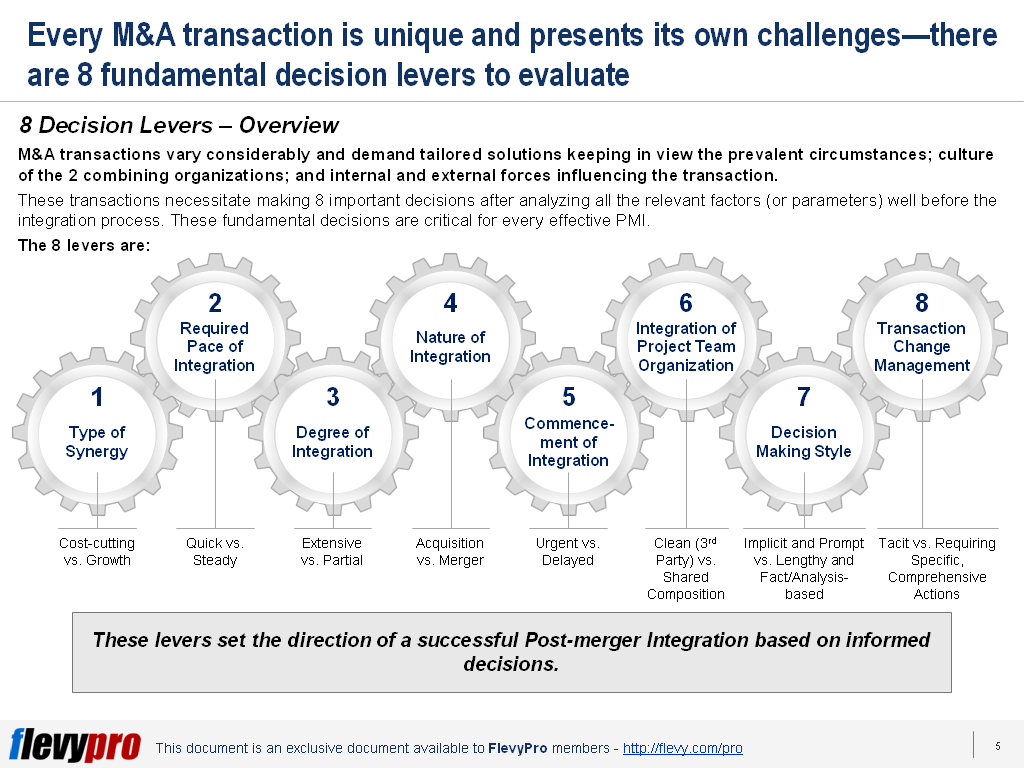

 Stiff market competition, expansion into new territories, product portfolio extension, and gaining new capabilities are the prime reasons why more and more organizations are seriously looking into the prospects of—and carrying out—
Stiff market competition, expansion into new territories, product portfolio extension, and gaining new capabilities are the prime reasons why more and more organizations are seriously looking into the prospects of—and carrying out—

 difficult when the competitive environment changes. Likewise, high performance as measured by shareholder returns is impossible to sustain over a long period of time. No company consistently beats the market.
difficult when the competitive environment changes. Likewise, high performance as measured by shareholder returns is impossible to sustain over a long period of time. No company consistently beats the market.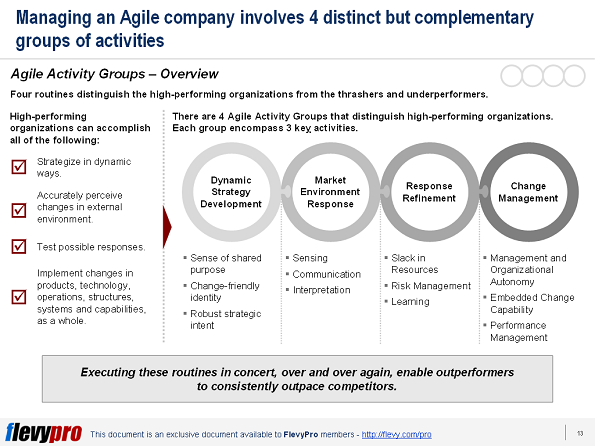

 importance. The struggle between competing firms has moved from tangible resources to intangible resources where knowledge and the ability to use knowledge have crucial roles.
importance. The struggle between competing firms has moved from tangible resources to intangible resources where knowledge and the ability to use knowledge have crucial roles.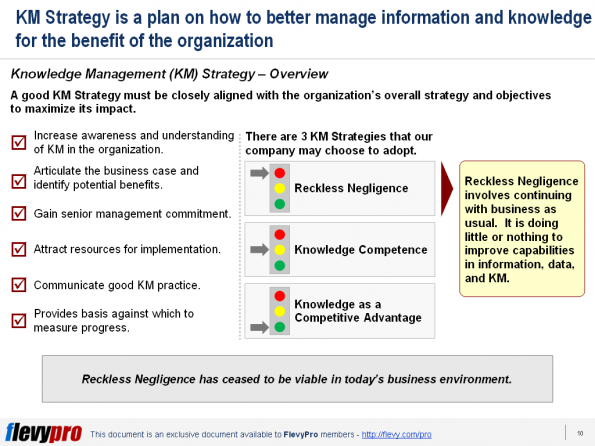

 incoherence between a company’s product and its overall
incoherence between a company’s product and its overall 

 global economics. Propelled by fast growth in the emerging world, the share of family businesses in the global Fortune 500 grew from 15% in 2005 to 19% in 2013. Five years ago, founders or their families owned 60% of emerging-market companies with sales of $1 billion or more. By 2025, an additional 4,000 companies may join the list. Family-owned businesses would represent 40% of the world’s large enterprise.
global economics. Propelled by fast growth in the emerging world, the share of family businesses in the global Fortune 500 grew from 15% in 2005 to 19% in 2013. Five years ago, founders or their families owned 60% of emerging-market companies with sales of $1 billion or more. By 2025, an additional 4,000 companies may join the list. Family-owned businesses would represent 40% of the world’s large enterprise.